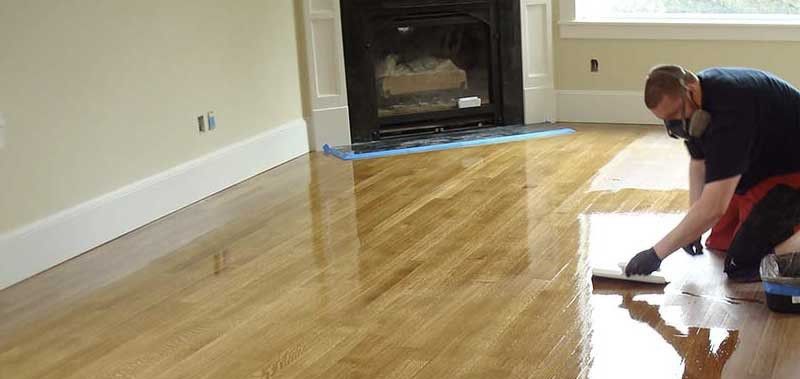
Picking an appropriate finish for a wood floor can turn out to be a daunting task and is fundamental in the decision-making process related to your flooring project. Wood flooring finishes are available in a broad array of options, including oiled, distressed, white washed and lacquered. Lacquered floors are known for their especially tough qualities. Usually, they have a bit of a shine, even if you’ve chosen matt lacquer. Lacquered finish flooring is a durable option and withstands a lot of wear and tear.
A lacquered finish creates a layer on the surface of wood flooring, rather than being absorbed by the wood like oil, and for this reason it is more prone to surface scratching as compared to oil finish. If lacquered finish flooring is scratched, it usually gets dull and starts looking slightly tired. You have many different options to repair it which can be used before taking a decision to completely refinish the flooring. Those include lacquer pens and other solutions. However, if the damage is serious and covers a larger surface, you should consider taking some serious steps. At this point you’ll usually start considering recoating the whole floor. Here’s what you will need to do.
Take all the items from the room, including carpets and furniture. In this way, you can ensure they don’t disturb or get damaged because of the dust coming from sanding. You will need to remember that when moving the furnishings, you should always lift it, instead of dragging it across the floor. Otherwise you can cause even more serious damage to the flooring.
If the room has been emptied, you will need to check the floor for any nails or staples, as these need to be removed or punched back into the floor.
Now, you can move on to re-sanding the floor, by removing the old lacquer finish. If you’ve decided to do it yourself, you will need to hire a drum sander and an edge sander. Then, do also remember about buying a broad range of sandpapers, starting from heavy grit (e.g. 40) to fine grit (ca. 120). A useful tip is to start sanding the floor using the heaviest grit paper first, and then gradually use finer grit.
After having sanded the floor, let the dust settle and then carefully vacuum up all the dust that’s been left on the floor, especially between the gaps. Subsequently, wipe the floor over using a damp mop or cloth to eliminate any remaining traces of dust and to leave the floor perfectly clean.
In order to recoat the lacquered flooring, apply the lacquer, by starting at the edges, moving on towards the centre of the room, and finally getting to the door area. While lacquering the edges, use a paintbrush, in the case of larger surfaces, you will need a roller. Remember to always work in sections and move along the grain – this will help you ensure you have covered the entire floor surface.
As far as maintenance of the newly recoated lacquered flooring is concerned, it should consists in regular vacuuming and wiping it with a damp mop. You usually don’t need to take any other measures. As lacquered wood floor is especially resistant to water, you don’t need to be as careful with using a damp mop as on oiled floors. However, bear in mind that you don’t need to soak the lacquered floor to clean it. It would be best to use a mop dampened with warm water in the case of minimal staining, and in the case of more stubborn stains, which can’t be removed in this way, you may need to use a mild, multi-purpose detergent or a relevant product depending on your flooring type. If it’s the first time you’re using a given detergent, you may want to consult your flooring supplier who will be able to confirm it is a right option for your floor.
| Mon-Fri | 8:00AM – 5:00PM |
| Saturday | 10:00AM – 4:00PM |
| Sunday | 11:00AM – 3:00PM |





.svg)
.svg)